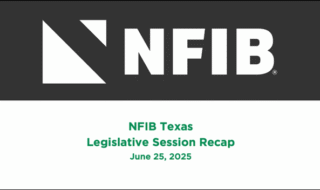Topics:
Inflation Eases For Some Small Businesses But Remains A Serious Problem
Inflation Eases For Some Small Businesses But Remains A Serious Problem
September 13, 2022
Inflation Eases For Some Small Businesses But Remains A Serious Problem
- Small business owners expecting better business conditions over the next six months improved 10 points from July to a net negative 42%, the highest level since February 2022, but a dismal outlook.
- The net percent of owners raising average selling prices decreased three points to a net 53% (seasonally adjusted), still a very inflationary outcome.
- The net percent of owners who expect real sales to be higher increased 10 points from July to a net negative 19%, but owners still want to hire.
- The Uncertainty Index increased seven points to 74.
Get to know NFIB
NFIB is a member-driven organization advocating on behalf of small and independent businesses nationwide.
Related Articles

July 1, 2025
Small Businesses Applaud State Budget
Gov. DeWine signed the Ohio budget, House Bill 96
Read More


July 1, 2025
WATCH: What Happened During the 2025 Colorado Legislative Sessi…
NFIB State Director Michael Smith discusses what small business owners need…
Read More


June 30, 2025
What Happened in Phoenix for Arizona Small Business Owners Duri…
A look at the small business victories achieved during the 2025 Arizona Leg…
Read More


June 30, 2025
WATCH: What Happened During the 2025 Texas Legislative Session
NFIB State Director Jeff Burdett discusses what small business owners need…
Read More







